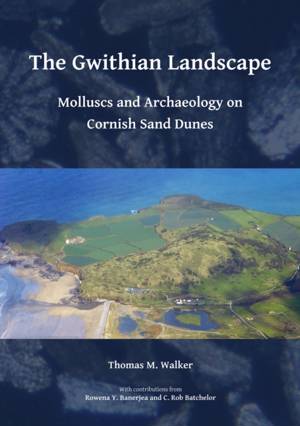
- Afhalen na 1 uur in een winkel met voorraad
- Gratis thuislevering in België vanaf € 30
- Ruim aanbod met 7 miljoen producten
- Afhalen na 1 uur in een winkel met voorraad
- Gratis thuislevering in België vanaf € 30
- Ruim aanbod met 7 miljoen producten
Zoeken
The Gwithian Landscape
Molluscs and Archaeology on Cornish Sand Dunes
Thomas Walker
Paperback | Engels
€ 51,45
+ 102 punten
Omschrijving
Gwithian, on the north coast of Cornwall, is a multiperiod archaeological site. Excavations by Charles Thomas in the mid-twentieth century provided evidence of human activity from the Mesolithic to the post-medieval period. The present work explores the palaeoenvironment of the area around the settlement sites, from the Neolithic, when sand dunes initially developed in the Red River valley, to the present post-industrial landscape. Multiproxy analyses on sediments from coring, a test pit and mollusc columns provide a view of the changing landscape and how it may have influenced, or been influenced by, human presence and settlement. Mollusc studies are used as the principal analytical method. Multiple radiocarbon and optically stimulated luminesce dates permit these changes to be studied on a tighter time frame than was previously possible. Mining activity from the Bronze Age to the present is explored using fine-resolution geochemistry. Dating allows the timing of the extinction and introduction of some mollusc species to be refined.
Specificaties
Betrokkenen
- Auteur(s):
- Uitgeverij:
Inhoud
- Aantal bladzijden:
- 210
- Taal:
- Engels
Eigenschappen
- Productcode (EAN):
- 9781784918033
- Verschijningsdatum:
- 31/03/2018
- Uitvoering:
- Paperback
- Formaat:
- Trade paperback (VS)
- Afmetingen:
- 201 mm x 292 mm
- Gewicht:
- 675 g

Alleen bij Standaard Boekhandel
+ 102 punten op je klantenkaart van Standaard Boekhandel
Beoordelingen
We publiceren alleen reviews die voldoen aan de voorwaarden voor reviews. Bekijk onze voorwaarden voor reviews.








